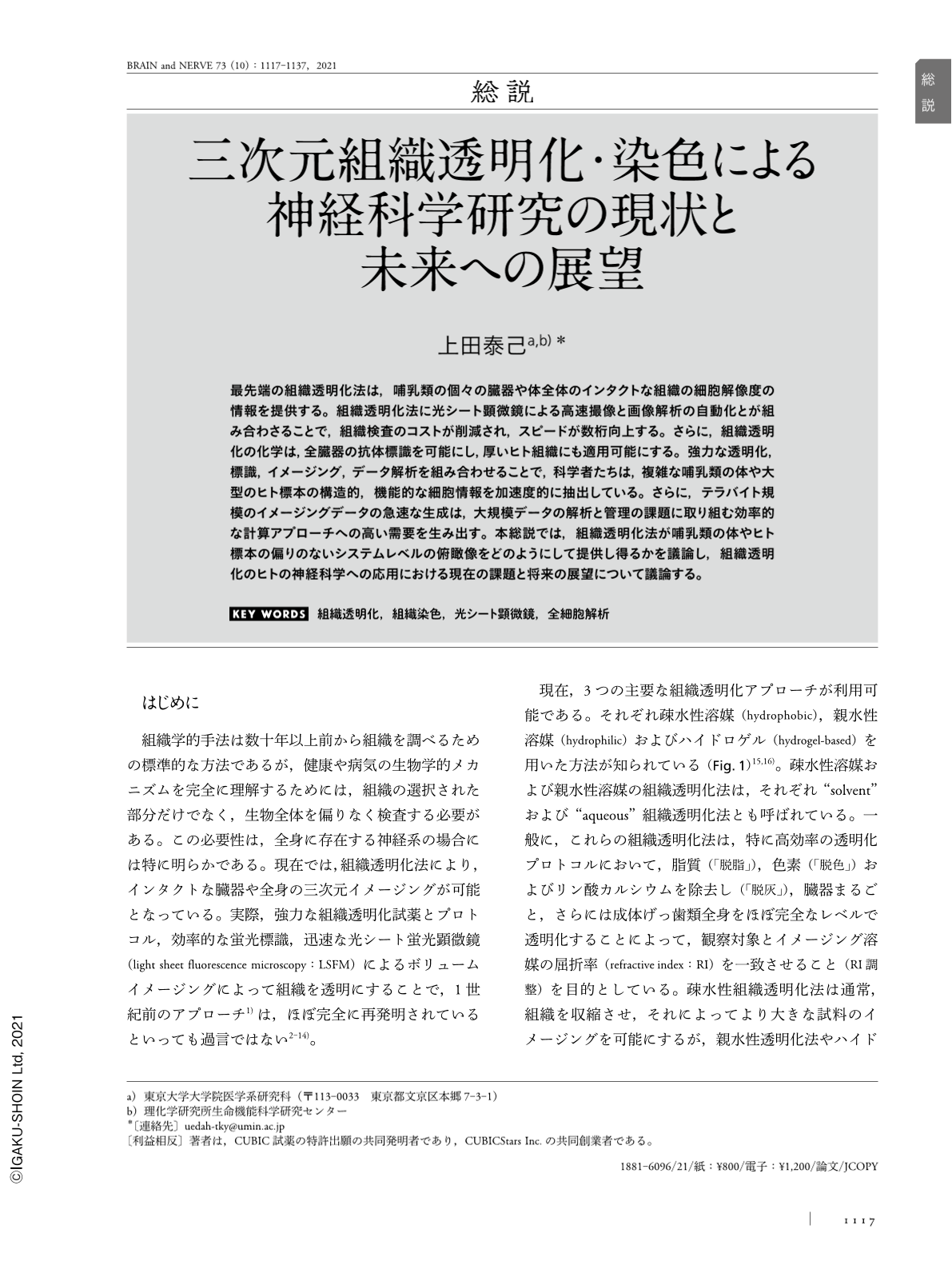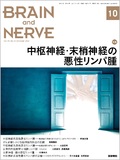Japanese
English
- 有料閲覧
- Abstract 文献概要
- 1ページ目 Look Inside
- 参考文献 Reference
最先端の組織透明化法は,哺乳類の個々の臓器や体全体のインタクトな組織の細胞解像度の情報を提供する。組織透明化法に光シート顕微鏡による高速撮像と画像解析の自動化とが組み合わさることで,組織検査のコストが削減され,スピードが数桁向上する。さらに,組織透明化の化学は,全臓器の抗体標識を可能にし,厚いヒト組織にも適用可能にする。強力な透明化,標識,イメージング,データ解析を組み合わせることで,科学者たちは,複雑な哺乳類の体や大型のヒト標本の構造的,機能的な細胞情報を加速度的に抽出している。さらに,テラバイト規模のイメージングデータの急速な生成は,大規模データの解析と管理の課題に取り組む効率的な計算アプローチへの高い需要を生み出す。本総説では,組織透明化法が哺乳類の体やヒト標本の偏りのないシステムレベルの俯瞰像をどのようにして提供し得るかを議論し,組織透明化のヒトの神経科学への応用における現在の課題と将来の展望について議論する。
Abstract
State-of-the-art tissue-clearing methods provide cellular resolution information of intact tissues in individual mammalian organs and the entire body. Combining these tissue-clearing methods with high-speed imaging and automated image analysis using light-sheet microscopy can reduce the cost and speed up tissue examination by several orders of magnitude. Moreover, the chemical nature of these methods enable antibody labeling of entire organs, which can be applied to thick human tissues. By combining powerful tissue clearing, labeling, imaging, and data analysis, scientists are able to extract structural and functional cellular information from complex mammalian bodies and large human specimens. Furthermore, the rapid generation of terabytes of imaging data calls for efficient computational approaches to address the challenges of large data set analysis and management. In this review, we described how tissue-clearing methods can provide an unbiased overview of mammalian bodies and human specimens at the system level, and discussed the current challenges and future possibilities in applying tissue-clearing methods to human neuroscience.

Copyright © 2021, Igaku-Shoin Ltd. All rights reserved.


